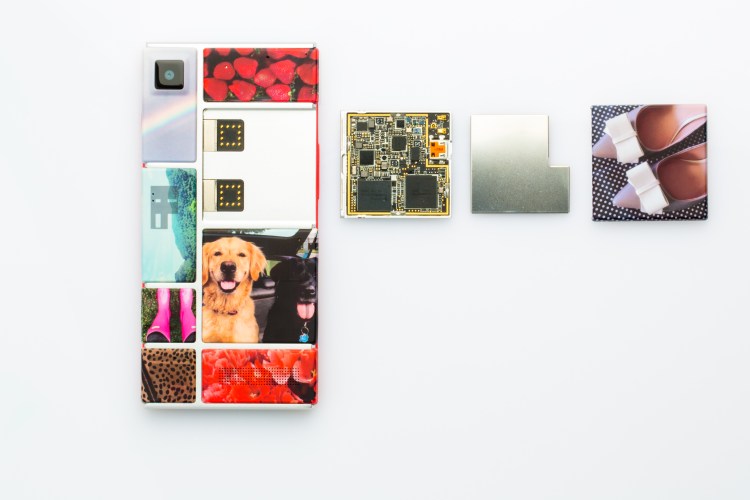testsetset
MOUNTAIN VIEW, Calif. — Google has been quite busy improving the hardware for its highly customizable Project Ara smartphones.
The latest version of the Spiral 2 prototype features a 3G modem and an RF bus that will support antennas, and it contains a totally different type of processor — application-specific integrated circuits (ASICs), rather than field-programmable gate arrays (FPGAs), Paul Eremenko, director of Project Ara, announced at the Project Ara Module Developers Conference on the Google campus today.
What’s more, Google has developed 11 prototype modules to slide into the phone (Google declined to identify them); more should be on the way when developers come up with their own modules. And the magnets that can keep the modules stuck onto the backbone of the phone have been relocated from the modules themselves into the frame.
Google has scrapped the original plan to depend heavily on 3D printing for the Ara hardware. A dye sublimation process will be used instead, Eremenko said.
June 5th: The AI Audit in NYC
Join us next week in NYC to engage with top executive leaders, delving into strategies for auditing AI models to ensure fairness, optimal performance, and ethical compliance across diverse organizations. Secure your attendance for this exclusive invite-only event.
A Spiral 3 prototype is now in the works, he added.
As for the cost of an Ara phone, it will depend on which modules people select.
Google’s Project Ara is based on the goal of giving consumers more choice in terms of its capabilities, appearance, composition, cost, and life span. Google will do that by providing the basic frame, or “endoskeleton,” that can hold the swappable modules of batteries, storage, processors, cameras, speakers, and other components — as opposed to a slab of a phone whose parts cannot be tinkered with. The strategy could help Google get smartphones into the hands of millions or even billions of people who’ve never had them.
Architecturally, though, the model isn’t completely new. Do-it-yourself types have built computers containing only the components they want for several years. Even servers for data centers have seen a similar level of customization, thanks to Facebook’s Open Compute Project. With Project Ara, this degree of personalization could come to smartphones at scale.
Project Ara came to light in 2013, when Eremenko, at that time within Motorola’s Advanced Technology and Projects group, disclosed just a bit of information about the initiative in a blog post. The group stuck around Google after Google sold off Motorola Mobility to Lenovo.
Four months after word of Ara first came out, Time reported that Google intended to roll out $50 Ara phones packing Wi-Fi connectivity within a year.
Today Google announced a “market pilot” in Puerto Rico that would begin later this year. A global launch could come later, Eremenko said.





















































